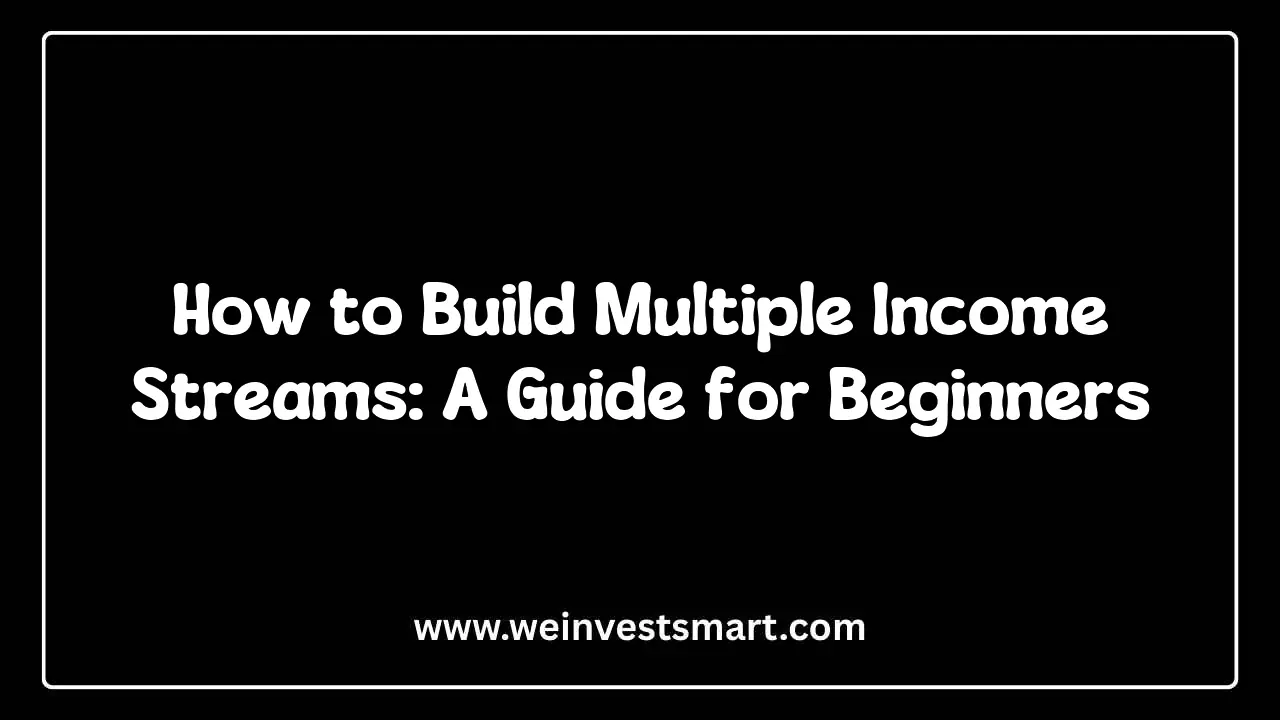· WeInvestSmart Team · investing-basics · 9 min read
What is a Target-Date Fund? The Simplest "Set It and Forget It" Retirement Investment
Confused by investing? This guide demystifies target-date funds, the revolutionary "set it and forget it" tool that automatically manages your risk as you approach retirement, making it ideal for beginners.
Most people know they should be investing for retirement, but they’re paralyzed by the terrifying complexity of it all. They log into their 401(k) account and are confronted with a dizzying list of options: large-cap growth, small-cap value, international blend, emerging markets, bond funds. It feels like being asked to perform surgery with a manual you can’t read. The fear of making a catastrophic mistake is so great that many do nothing at all, leaving their life savings in cash, where it’s slowly devoured by inflation.
Here’s the uncomfortable truth: for the vast majority of people, trying to be a stock-picking genius or a market-timing wizard is a surefire way to underperform. The single most important factor in your long-term investment success isn’t picking the “hot” stock; it’s your asset allocation—the mix of stocks and bonds in your portfolio. But getting that mix right, and more importantly, adjusting it correctly over decades, is a task most people are completely unequipped to handle.
But what if we told you there was a single investment that could solve this entire problem for you? An ingenious invention that handles diversification, asset allocation, and rebalancing automatically, all for an incredibly low cost? Here’s where things get interesting. This isn’t a futuristic fantasy; it’s a target-date fund (TDF), and it might be the most significant positive development for everyday investors since the index fund. And this is just a very long way of saying that the single best investment decision you might ever make is the decision to stop making decisions.
The Pilot in the Cockpit: How a Target-Date Fund Works
To understand the genius of a target-date fund, you first have to understand the core challenge of long-term investing. When you are young, with decades until retirement, your greatest asset is time. You can afford to take on more risk in pursuit of higher returns, which means a portfolio heavily weighted toward stocks. As you approach retirement, your priority shifts from growth to preservation. You need to reduce risk to protect your nest egg from a sudden market crash right before you need the money. This means shifting your allocation more toward safer, more stable bonds.
Going straight to the point, a target-date fund automates this entire process. It’s a “fund of funds,” meaning it’s a single mutual fund that invests in a diversified mix of other stock and bond funds. You simply choose the fund with the year in its name that’s closest to your expected retirement date. For example, if you’re 30 years old today and plan to retire around age 65, you’d choose a “Target 2060 Fund.”
Once you’ve made that single choice, the fund’s professional managers take over for the next 40 years. It’s like hiring a pilot for your retirement journey. You tell them your destination (2060), and they handle all the complex controls to get you there safely.
The Glide Path: Your Portfolio’s Automated Landing Sequence
The magic behind a target-date fund is its “glide path.” Think of it like an airplane’s landing approach. Decades from its destination, the plane is flying high and fast (aggressive growth). As it gets closer to the airport, the pilot gradually reduces altitude and speed, ensuring a smooth, safe landing (conservative preservation). The glide path is the predefined formula that dictates how the fund’s asset allocation will change over time, “gliding” from aggressive to conservative as the target date approaches.
Here’s a simplified, practical example of what the glide path for a Target 2060 Fund might look like:
- In 2025 (35 years to retirement): The fund’s allocation might be 90% stocks and 10% bonds. The portfolio is in maximum growth mode, taking full advantage of the long time horizon.
- In 2045 (15 years to retirement): The glide path has automatically shifted the mix. The allocation might now be 70% stocks and 30% bonds. The fund is still focused on growth but has begun to introduce more stability.
- In 2060 (The Target Date): The fund reaches its target landing point. The allocation might now be 50% stocks and 50% bonds. The portfolio is balanced to provide both some continued growth and significant capital preservation for your early retirement years.
This sounds like a simple trade-off, but it’s actually an incredibly sophisticated and desirable process. The fund automatically handles the rebalancing, which prevents you from making emotionally driven mistakes, like panic-selling stocks during a downturn or getting greedy during a bull market. The genius of the TDF is that it harnesses investor inertia for good.
The “To” vs. “Through” Debate: Where Does the Plane Land?
Here’s where things get a little more nuanced. Not all glide paths are created equal. Different fund companies have different philosophies about what should happen when the fund reaches its target date. This leads to two main types of glide paths: “To” and “Through.”
- “To” Retirement Funds: These funds are designed to reach their most conservative, final asset allocation on the target date. The assumption is that the investor might take all their money out at retirement (perhaps to buy an annuity). After the target date, the allocation remains static.
- “Through” Retirement Funds: These funds are designed with the knowledge that people may live 20 to 30 years in retirement and still need some growth. The glide path continues to adjust for another 10 to 20 years after the target date, becoming progressively more conservative over time before reaching its final allocation. This is the more common and, for many, more logical approach.
You get the gist: a “To” fund lands the plane at the target date, while a “Through” fund lands the plane and then slowly taxies to the terminal over the next decade. It’s crucial to look at a fund’s prospectus to understand its approach.
The Undeniable Benefits of Simplicity
The primary reason target-date funds have become the default investment in most 401(k) plans is their powerful simplicity. They solve the biggest problems that plague beginner and hands-off investors.
- Instant, Global Diversification: With one purchase, you own thousands of stocks and bonds from around the world. You are instantly diversified across asset classes, industries, and countries, a feat that would be incredibly complex and expensive to replicate on your own.
- Solves the Asset Allocation Problem: The fund’s managers handle the most critical determinant of your success—your stock/bond mix—based on proven, age-appropriate principles.
- Automates Rebalancing: The fund managers regularly buy and sell assets to maintain the target allocation. This forces a “buy low, sell high” discipline that most individual investors fail to execute on their own, especially during periods of market stress.
- Lowers Behavioral Risk: By putting your portfolio on autopilot, you are less likely to tinker with it. This protects you from your worst enemy: yourself. It prevents the classic behavioral mistakes of chasing performance or panic selling at the bottom.
The “One-Size-Fits-All” Critique: What to Watch Out For
Of course, no investment is perfect. The funny thing is that the greatest strength of target-date funds—their simplicity—is also the source of their biggest criticisms.
- It’s Not a Custom Suit: A TDF assumes everyone retiring in the same year has the same risk tolerance and financial situation. An investor with a large pension and a high risk tolerance might be better served by a more aggressive allocation than the standard TDF provides.
- Fees Can Vary: Target-date funds are a “fund of funds,” which can sometimes lead to a double layer of fees. However, costs have been dropping dramatically. The average expense ratio is now quite low, with some major providers like Vanguard offering funds for as little as 0.08%. Still, you must check the fees. An expense ratio of 1% or more can significantly erode your returns.
- Different Funds, Different Strategies: A “2050 Fund” from Fidelity might have a very different glide path and underlying holdings than a “2050 Fund” from T. Rowe Price. One might be more aggressive or have more international exposure than another. It’s important not to assume all funds with the same date are identical.
The Bottom Line: The Best Starting Point for Almost Everyone
For the overwhelming majority of people who are not and do not want to become investing experts, a low-cost target-date fund is the single best tool for building retirement wealth. It provides a professionally managed, globally diversified, and age-appropriate portfolio in one simple package. It automates the most important decisions and protects you from the most common mistakes.
This sounds like a sales pitch, but it’s actually a plea for rational simplicity. Don’t let the illusion of complexity prevent you from starting. You don’t need to be an expert to succeed at investing; you just need a disciplined, proven process. A target-date fund provides that process for you. And this is just a very long way of saying that you should set it, forget it, and let the power of automated investing build the future you deserve.
This article is for educational purposes only and should not be considered personalized financial advice. Consider consulting with a financial advisor for guidance specific to your situation.
Target-Date Fund FAQ
What is a target-date fund?
A target-date fund is a “fund of funds” that provides a diversified retirement portfolio in a single investment. You choose a fund with a year closest to your planned retirement date, and it automatically adjusts its investment mix over time, becoming more conservative as the date approaches.
How does a target-date fund work?
It operates on a “glide path.” When you are young and far from retirement, the fund is aggressive, holding a high percentage of stocks for growth. As you get closer to the target year, it automatically and gradually sells stocks and buys more conservative bonds to protect your savings. This shift manages risk for you.
Are target-date funds good for beginners?
Yes, they are one of the best options for beginners. They eliminate the need for you to pick individual stocks or rebalance your portfolio. They provide instant diversification and professional management, making them a true “set it and forget it” solution that helps avoid common investor mistakes.
What are the disadvantages of target-date funds?
The main drawbacks are that they can be a one-size-fits-all solution, not tailored to your specific risk tolerance. Fees can sometimes be higher than building a portfolio yourself, and different funds with the same date can have very different strategies. It’s important to check the fund’s details.
How do I choose the right target-date fund?
Simply choose the fund with the year in its name that is closest to when you plan to retire. If you plan to retire in 2058, a “2060 Fund” would be the appropriate choice. If you want to be slightly more aggressive, you could choose a fund with a later date, like 2065.



